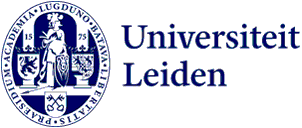
From droplets in the freezer to the inception of a potent new antibiotic
What started as an idea during a social gathering led to an unexpected breakthrough in research on resistant bacteria. Biologists and chemists from Leiden developed a new substance that proves to be effective against bacteria resistant to antibiotics. They published their discovery in Nature Chemistry.
Within the Leiden Institute of Chemistry, researchers create various compounds. Professor of Molecular Physiology, Mario van der Stelt, says, ‘We always keep a few milligram of our final compounds in a freezer, in case someone wants to reuse our materials for their research.’ He considers such a compound library a beautiful form of Open Science. ‘During a social gathering, Nathaniel Martin and I thought we could also test these compounds on difficult-to-treat pathogenic bacteria.’
First old school, then with modern techniques
Working together, the two PhD researchers Ioli Kotsogianni and Alexander Bakker tested the compound library against a range of pathogenic bacteria including E. coli. And bingo! There appeared to be a compound that killed many bacteria at an acceptable concentration. Following on these simple bacterial growth assays, advanced techniques were employed to identify the target of the new antibiotic, says Professor of Biological Chemistry Nathaniel Martin, whose group works on finding novel antibacterials to counter resistant bacteria. 'In collaboration with the group of our colleague Gilles van Wezel (Professor of Molecular Biotechnology, ed.) the complete genomes of bacteria that were and were not resistant to the newly found antibiotic were sequenced. This revealed where the antibiotic attacks the bacteria.’
The genetic difference between the bacteria sensitive or resistant to the new antibiotic showed where it attacked the bacteria. Martin explains, ‘The bacteria resistant to the antibiotic had a number of gene mutations related to the essential protein DNA gyrase.’ All bacteria rely on gyrase to loosen or tighten their DNA to enable cell division. These finding pointed to a working mechanism for the antibiotic involving inhibition of the gyrase protein, preventing bacteria from dividing.
A disappointing discovery
Initially, this was a disappointing discovery for the researchers, says Van der Stelt. ‘Gyrase is also a protein that is targeted by a widely used existing class of antibiotics. So, we briefly thought we didn't have a new method of attack, only an antibiotic that does the same as existing agents, which increasingly fails.’

The researchers didn't give up. They sent their new compound to the Norwich Centre for Microbiology in the UK, where colleagues there, using special cryo-electron microscopy at the molecular level, could see how the substance binds to a protein in a deeply frozen state. It became clear that the new antibiotic discovered in Leiden targets the gyrase protein at a different site than existing antibiotics.
That was the breakthrough
In Van der Stelt's lab, master's students worked on improving the new antibiotic. ‘The first student, Diana Piermarini, made eighty or ninety variants without any improvement. Then we wanted to try one more thing to make the molecule more rigid. That was done by a new student, Jeroen Punt, who is now a PhD student with us. That was the breakthrough.’ The researchers named their substance LEI-800, after its 'birthplace,' Leiden. Based on this, the Leiden University Technology Transfer Office filed for a patent covering LEI-800.
Van der Stelt doesn't expect LEI-800 itself to ultimately come to market as a new antibiotic. ‘LEI-800 binds strongly to the gyrase protein, but mice appear to break it down very quickly, and the molecule also doesn't easily enter the bacterial cell.’ The value of LEI-800 is primarily that it has revealed an important new point of attack in the fight against resistant bacteria. It's likely that a pharmaceutical company will search for another molecule that targets gyrase at this point and is more suitable as a medicine than LEI-800, according to Van der Stelt. ‘It would be a shame if that didn't happen.’
The power lies in the combination
Martin believes that such a new medicine will be particularly effective in combination with an existing antibiotic. ‘For the existing gyrase-targeting antibiotic ciprofloxacin, the bacterium only needs one specific mutation to become resistant. The chance of that happening by chance is quite high.’ To become resistant to a LEI-800-like substance, the bacterium would need a different mutation. ‘The chance that a bacterium can simultaneously achieve two such gene mutations and thus becomes resistant to the antibiotic comination is extremely small.’ For this reason a combination of the two could offer a solution.
Both researchers emphasize that their discovery is thanks to exceptionally good cooperation between different departments within the Leiden Early Drug Discovery & Development (LED3). Here, Leiden biologists, chemists, and drug researchers work on new solutions for cardiovascular diseases, cancer, brain disorders, and infectious diseases.
Read the full article in Nature Chemistry.
Also against MRSA-bacteria
At the end of 2022, the LED3 scientists also published a similar discovery about MRSA bacteria: Chemical Proteomics Reveals Antibiotic Targets of Oxadiazolones in MRSA. This research began with the same substance library as the work now published.
Text: Rianne Lindhout
